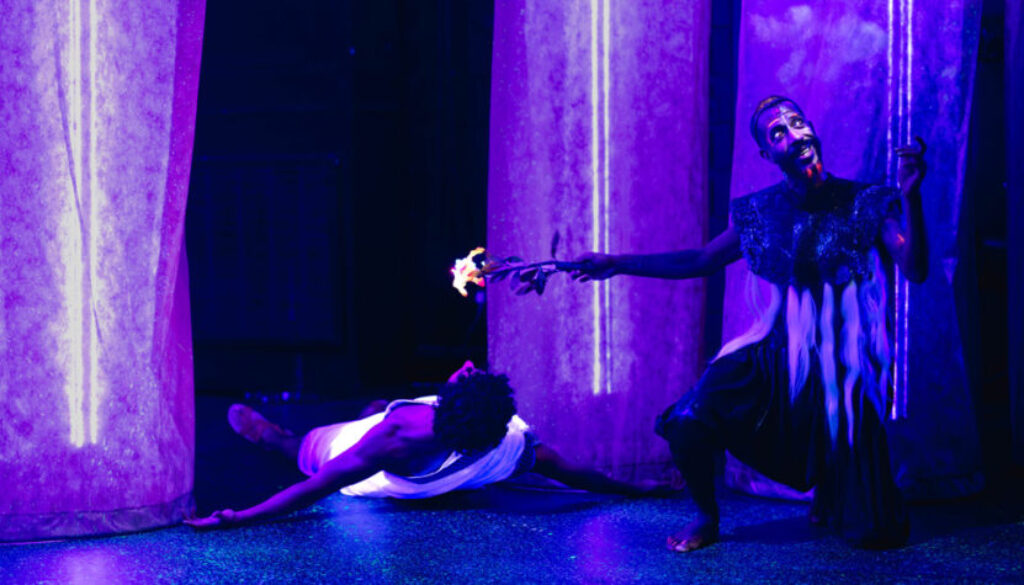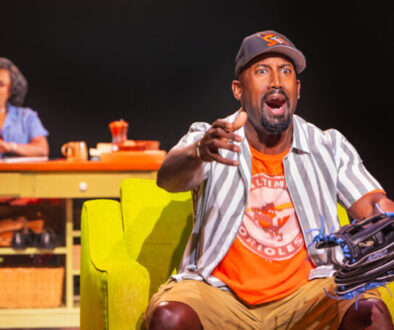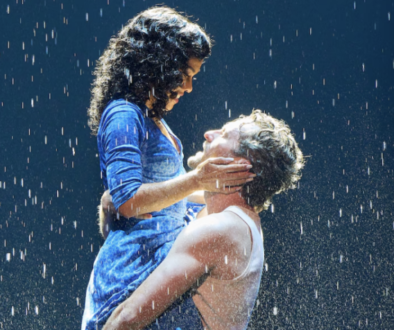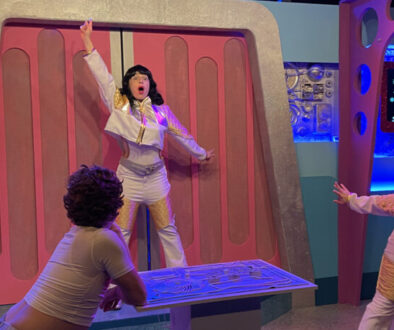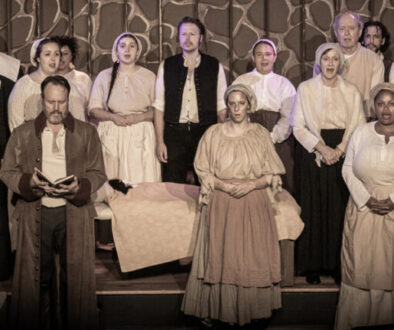By ALAN SMASON
This season’s New Orleans Shakespeare Festival has been quite unusual. To begin with, the first of its two major productions wasn’t even Shakespeare: it was Moliére and his final opus The Imaginary Invalid. That production was quite special with a new translation and adaptation by Ryder Thornton and superb direction by Anne-Liese Juge Fox.
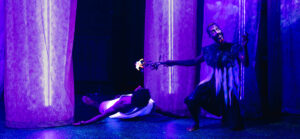
But when the major Shakespeare work for the season, A Midsummer Night’s Dream, bowed the weekend of July 11, no one could have expected just how uncommon and unusual it would be as well.
Directed by interim artistic director Graham Burk, this version of Shakespeare’s depiction of an otherworldly forest is complemented by superb lighting effects and black light makeup that give actors vastly different looks and accentuate the enchantment the characters endure there.
In addition, long strings of lights and projections emulate the tall trunks of the enchanted forest and the magic contained within the woods. This is all quite brilliantly designed (pun intended) by Alexander Le Valliant Freer. Freer, who has previously worked at the New Orleans Shakespeare Festival for its 2024 production of Julius Caesar and for Le Petit’s remarkable 2023 production of The Curious Incident of the Dog in the Night Time. He is a world class lighting designer with international and national credits to his résumé.
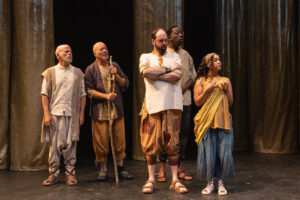
Of course, with Shakespeare it’s not about the lighting necessarily, it’s about the words and their delivery. This superb cast includes Matthew Raetz in the dual roles of Theseus and Moth and recent New Orleans transplant Kendall Berry as both Hippolyta and Mustardseed. Both make for a lovely, dedicated couple as Theseus and Hippolyta.
Burton Tedesco provides a grounded performance as Oberon and he is superbly matched with James Bartelle as Puck, who demonstrates with every nuance and every carefully orchestrated step that he is one of our city’s best interpreters of the Bard.
Ian Hoch’s comical portrayal of Bottom is another highlight of the play and he plays well against the enraptured Zarah Hokule’ A Spalding as Titania, despite the fact he must do so while wearing the head of a donkey.
There are, of course, the mortal four characters that are also entranced: Demetrius (Brandon Sutton), Hermia (Sarah-Grace Donnelly), Helena (Jane Cooper) and Lysander (Edward Montoya). They present two different love triangles during the course of the play, but it’s all part of setting things right at play’s end. They all play wonderfully opposite each other, either confused, exasperated or totally enraptured with the other.
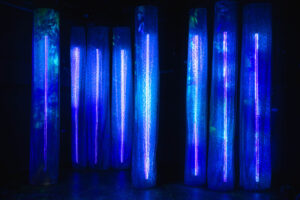
Celeste Cahn performs exceptionally well as Quince, too, leading the troupe of upstart players who would perform before the Duke of Athens (Theseus). In addition to the aforementioned Bottom and Mustardseed, they are Flute (Robinson J. Cyprian), Snout (John Jabaley) – who plays a wall better than most – Snug (Alexandria Miles), Starveling (Robert A. Mitchell), Peaseblossom (Matthew Rigdon) and Cobweb (Steven Rose Pendleton). The task of the group of finding just the right piece to offer in performance to the duke is delightfully comedic and Hoch is at the center of the hilarity.
Hope Bennett does a marvelous job with the costumes, while Steve Gilliland adds to the depth of the performances with excellent sound designs and compositions. Joan Long also deserves kudos for the simple, yet effective scenic design. Projections were renered by Jamie Godwin and go hand in hand with the other lighting designs.
This production of the time-honored Shakespeare comedy proves there are ways to present old works in a new light or, perhaps better said, a dark light.
The New Orleans Shakespeare Festival’s A Midsummer Night’s Dream (2 hours and 45 minutes with an intermission) by William Shakepeare and directed by Graham Burk finishes its run with final sold-out performances this weekend, July 24-27.

